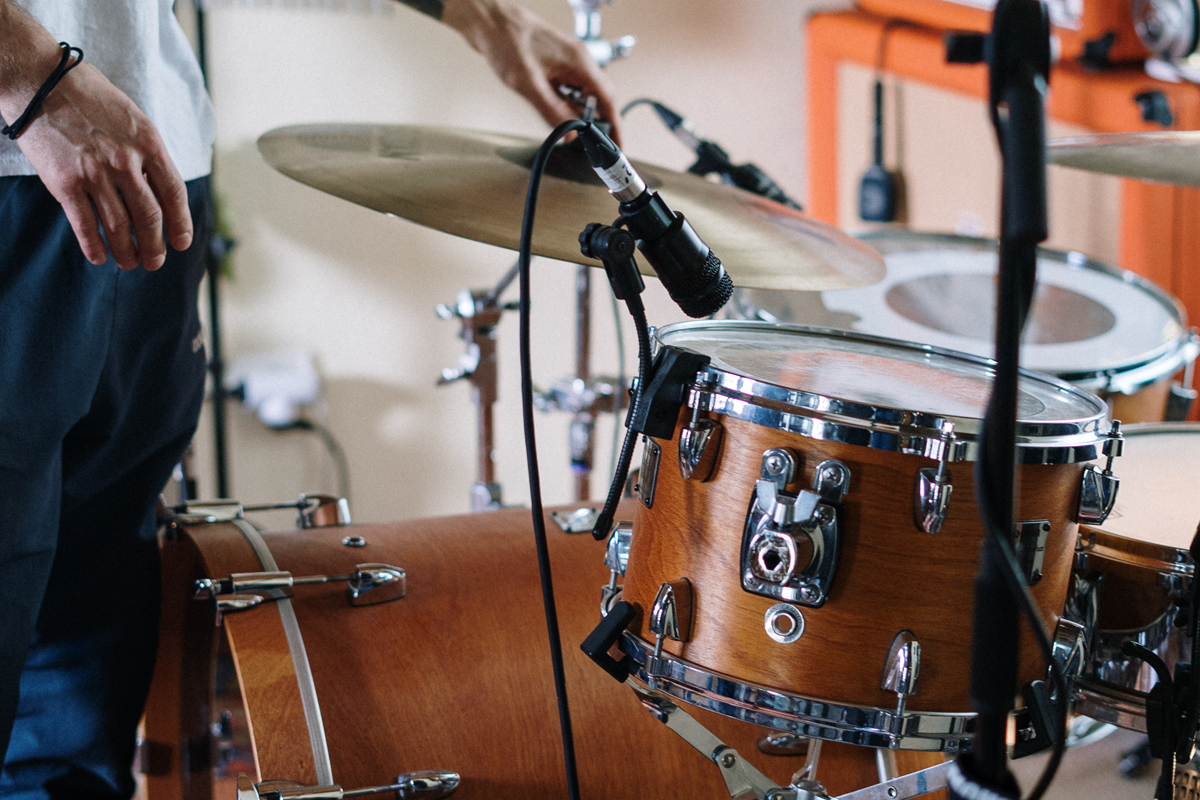
Professional sound engineers know well, that keeping up with the latest trends is important. When it comes to drums, there are always new drum sample sounds and techniques being developed. So in this blog post, we’ll take a look at some of the most recent trends in drum sampling that you should be aware of. From creative uses of found sounds to innovative new ways of layering samples and of course recording and mixing. There’s always something new to learn when it comes to drums. So read on and find out what’s currently trending in the world of drum sampling!
The classic 909 kick drum sound
Professional drum and percussion samples have made the classic 909 kick drum sound both popular and accessible choice among producers. First produced in 1984, the 909 was engineered to produce both a stronger and sharper kick sound than any other drum machine had before. Its low-end punch paired with its higher frequency attack have made it a distinct and easy go-to for music production across genres, from pop to techno. Professional samples that mimic the properties of the original 909 offer producers quick access to a powerful dynamic toolkit for creating or enhancing tracks with a signature kick drum sound.
The ‘80s snare sound
The snare sound from the 1980s had a unique energy and quality that has left its mark on pop music. This snare drum timbre was often accentuated with snare drum samples, which had a wooden tone to them and could be heard in genres such as synth-pop, post-disco, new wave and funk. Engineers used sampling technology to create snare samples and then incorporated them into mixes in order to enhance the snare sound within a track. The snare sound from this era resulted in an iconic punchy attack that continues to inspire producers today, as classic recordings continue to prove their worth and many new acts deliberately emulating the sounds of that period.
Layering different drums samples
Layering different snare drum samples is an effective technique for creating a unique and dynamic sound. This approach involves recording snare drum samples at various volume levels, pitches and playing styles, then stacking them together to create a snare sound that stands out from the rest. When done skillfully, these snare drums can blend together to create a powerful and distinctive new snare drum tone - one that can help drive your music forward. Using layers of snare drums allows you to experiment with combinations of sounds and discover how well certain elements compliment each other - ultimately creating an individually crafted snare drum track for your song.
Using EQ to boost or cut certain frequencies
Using equalization (EQ) to boost or cut certain frequencies is an invaluable skill for drum sample editing. It allows one to shape the drum samples and make them sound more accurate and realistic. By seeking out drum sounds that originally have good sounding frequency responses and then applying sensible EQ adjustments, drum samples can be tailored to fit specific projects with ease. EQing drum samples allows a skilled producer to create just the right amount of punch, clarity, and tone without having to search thousands of drum libraries. With the right perspective, using EQ to boost or cut certain frequencies can be used to breathe new life into drum samples and craft a track’s drum performance precisely how it was envisioned.
Applying effects like reverb and delay to your drums
Applying effects like reverb and delay to drum samples can drastically change the sound of your drum track in an instant. Reverb and delay each add interesting texture and space to drum sounds, making them feel more alive or larger than life. Delay, specifically, can also add rhythmic possibilities that weren’t there before. Using these two effects together allows you to create drum parts with a unique and creative twist. How you use reverb and delay will be entirely up to your imagination, but any drum track can benefit from these fantastic effects!
Experimenting with different mic placements
Experimenting with different microphone placements can be a great way to change the sound of a drum recording. Finding the right mics and angles can bring new depth and clarity, emphasizing certain elements while subduing others. To get started, it’s important to consider which drum components we want to capture on the recording - kick drum, snare drum, cymbals, and drum room ambience. Then we can determine appropriate microphone types based on our desired goals. For example, using a large-diaphragm condenser for capturing richer sounds may work better in some cases than a small-diaphragm dynamic mic. Having explored these options and decided on setup placements, we can experiment further by moving microphones around to find the mix that best fits our needs.
Macdrum
Our selection of drum and percussion samples are perfect for anyone who wants to experiment with their sound. Whether you’re looking for a classic 909 kick drum sound or want to create a unique layered drumming style, we have the drum samples you need. All recorded on classic gear by great players and utilising the latest production techniques.
And don’t forget, Andy Macpherson is one of the best producers in the business. He has worked with the likes of The Who, Debbie Harry, The Buzzcocks and many more, from his studio, Revolution Studios, Manchester. Macdrum’s samples are sonically superb, you won’t find better! If you’re ready to start experimenting with your drum sounds and building some percussion powerhouses, shop now at Macdrum.com
Thanks
